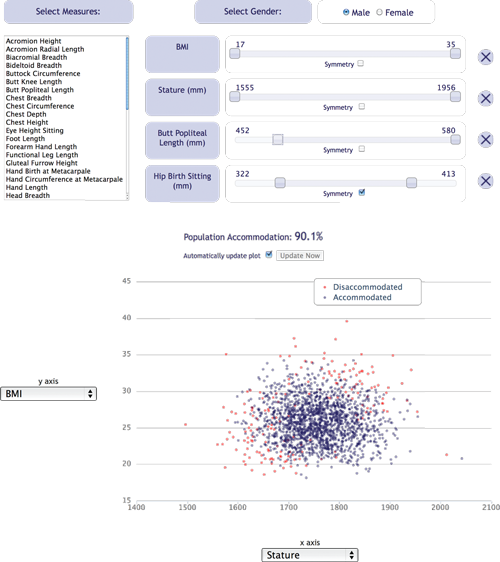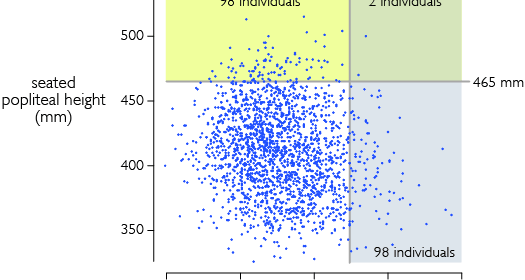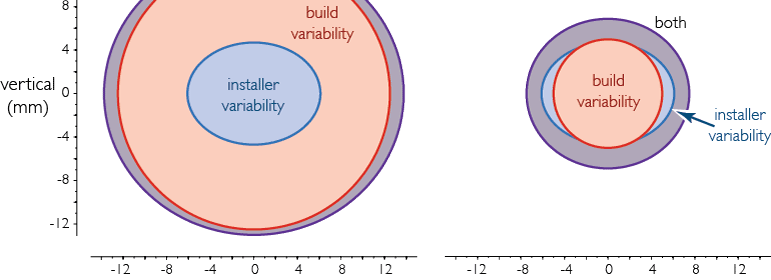
by mbp11 | Jun 14, 2011 | Publications
Accurate representations of anthropometry are necessary for effective digital human models. It has been known for decades that inappropriate application of univariate anthropometric data to multivariate problems yields suboptimal design performance. However,...

by mbp11 | Jun 13, 2011 | Publications
The spatial dimensions of vehicle seats affect their ability to accommodate the physical requirements of the target user population. This paper presents a methodology for selecting the relevant design parameters, including the width, depth, and height of the pan as...

by mbp11 | Jan 1, 2011 | Publications
The success of a vehicle seat is defined in large part by its acceptability to users and compliance with applicable regulations. Simultaneously satisfying both of these objectives can be challenging, and it is the goal of the designer to balance the requirements of...

by mbp11 | Aug 15, 2010 | Publications
In products designed for human variability, the anthropometry (body measurements) of the target user population constitutes a primary source of variability that must be considered in the optimization of the spatial dimensions of the product. Accommodation, which...

by mbp11 | Aug 15, 2010 | Publications
Reconfigurable systems are able to meet the increasingly diverse needs of consumers. A reconfigurable system is able to change its configuration repeatedly and reversibly to match the customer’s needs or the surrounding environment, allowing the system to meet...

by mbp11 | Aug 15, 2010 | Publications
This study presents a novel, quantitative tool for design decision-making for products designed for human variability. Accommodation, which describes the ability of a user to interact with a device or environment in a preferred way, is a key product performance...






